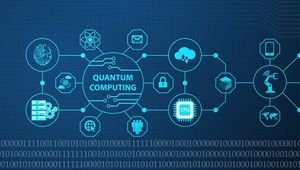
The rapid evolution of artificial intelligence, particularly the explosion of large language models (LLMs) and the proliferation of edge AI applications, has triggered a profound shift in computing hardware. No longer sufficient are general-purpose processors; the era of specialized AI accelerators is upon us. These purpose-built chips, meticulously optimized for particular AI workloads such as natural language processing or computer vision, are proving indispensable for unlocking unprecedented performance, efficiency, and scalability in the most demanding AI tasks. This hardware revolution is not merely an incremental improvement but a fundamental re-architecture of how AI is computed, promising to accelerate innovation and embed intelligence more deeply into our technological fabric.
This specialization addresses the escalating computational demands that have pushed traditional CPUs and even general-purpose GPUs to their limits. By tailoring silicon to the unique mathematical operations inherent in AI, these accelerators deliver superior speed, energy optimization, and cost-effectiveness, enabling the training of ever-larger models and the deployment of real-time AI in scenarios previously deemed impossible. The immediate significance lies in their ability to provide the raw computational horsepower and efficiency that general-purpose hardware cannot, driving faster innovation, broader deployment, and more efficient operation of AI solutions across diverse industries.
Unpacking the Engines of Intelligence: Technical Marvels of Specialized AI Hardware
The technical advancements in specialized AI accelerators are nothing short of remarkable, showcasing a concerted effort to design silicon from the ground up for the unique demands of machine learning. These chips prioritize massive parallel processing, high memory bandwidth, and efficient execution of tensor operations—the mathematical bedrock of deep learning.
Leading the charge are a variety of architectures, each with distinct advantages. Google (NASDAQ: GOOGL) has pioneered the Tensor Processing Unit (TPU), an Application-Specific Integrated Circuit (ASIC) custom-designed for TensorFlow workloads. The latest TPU v7 (Ironwood), unveiled in April 2025, is optimized for high-speed AI inference, delivering a staggering 4,614 teraFLOPS per chip and an astounding 42.5 exaFLOPS at full scale across a 9,216-chip cluster. It boasts 192GB of HBM memory per chip with 7.2 terabits/sec bandwidth, making it ideal for colossal models like Gemini 2.5 and offering a 2x better performance-per-watt compared to its predecessor, Trillium.
NVIDIA (NASDAQ: NVDA), while historically dominant with its general-purpose GPUs, has profoundly specialized its offerings with architectures like Hopper and Blackwell. The NVIDIA H100 (Hopper Architecture), released in March 2022, features fourth-generation Tensor Cores and a Transformer Engine with FP8 precision, offering up to 1,000 teraFLOPS of FP16 computing. Its successor, the NVIDIA Blackwell B200, announced in March 2024, is a dual-die design with 208 billion transistors and 192 GB of HBM3e VRAM with 8 TB/s memory bandwidth. It introduces native FP4 and FP6 support, delivering up to 2.6x raw training performance and up to 4x raw inference performance over Hopper. The GB200 NVL72 system integrates 36 Grace CPUs and 72 Blackwell GPUs in a liquid-cooled, rack-scale design, operating as a single, massive GPU.
Beyond these giants, innovative players are pushing boundaries. Cerebras Systems takes a unique approach with its Wafer-Scale Engine (WSE), fabricating an entire processor on a single silicon wafer. The WSE-3, introduced in March 2024 on TSMC's 5nm process, contains 4 trillion transistors, 900,000 AI-optimized cores, and 44GB of on-chip SRAM with 21 PB/s memory bandwidth. It delivers 125 PFLOPS (at FP16) from a single device, doubling the LLM training speed of its predecessor within the same power envelope. Graphcore develops Intelligence Processing Units (IPUs), designed from the ground up for machine intelligence, emphasizing fine-grained parallelism and on-chip memory. Their Bow IPU (2022) leverages Wafer-on-Wafer 3D stacking, offering 350 TeraFLOPS of mixed-precision AI compute with 1472 cores and 900MB of In-Processor-Memory with 65.4 TB/s bandwidth per IPU. Intel (NASDAQ: INTC) is a significant contender with its Gaudi accelerators. The Intel Gaudi 3, expected to ship in Q3 2024, features a heterogeneous architecture with quadrupled matrix multiplication engines and 128 GB of HBM with 1.5x more bandwidth than Gaudi 2. It boasts twenty-four 200-GbE ports for scaling, and MLPerf projected benchmarks indicate it can achieve 25-40% faster time-to-train than H100s for large-scale LLM pretraining, demonstrating competitive inference performance against NVIDIA H100 and H200.
with 65.4 TB/s bandwidth per IPU. Intel (NASDAQ: INTC) is a significant contender with its Gaudi accelerators. The Intel Gaudi 3, expected to ship in Q3 2024, features a heterogeneous architecture with quadrupled matrix multiplication engines and 128 GB of HBM with 1.5x more bandwidth than Gaudi 2. It boasts twenty-four 200-GbE ports for scaling, and MLPerf projected benchmarks indicate it can achieve 25-40% faster time-to-train than H100s for large-scale LLM pretraining, demonstrating competitive inference performance against NVIDIA H100 and H200.
These specialized accelerators fundamentally differ from previous general-purpose approaches. CPUs, designed for sequential tasks, are ill-suited for the massive parallel computations of AI. Older GPUs, while offering parallel processing, still carry inefficiencies from their graphics heritage. Specialized chips, however, employ architectures like systolic arrays (TPUs) or vast arrays of simple processing units (Cerebras WSE, Graphcore IPU) optimized for tensor operations. They prioritize lower precision arithmetic (bfloat16, INT8, FP8, FP4) to boost performance per watt and integrate High-Bandwidth Memory (HBM) and large on-chip SRAM to minimize memory access bottlenecks. Crucially, they utilize proprietary, high-speed interconnects (NVLink, OCS, IPU-Link, 200GbE) for efficient communication across thousands of chips, enabling unprecedented scale-out of AI workloads. Initial reactions from the AI research community are overwhelmingly positive, recognizing these chips as essential for pushing the boundaries of AI, especially for LLMs, and enabling new research avenues previously considered infeasible due to computational constraints.
Industry Tremors: How Specialized AI Hardware Reshapes the Competitive Landscape
The advent of specialized AI accelerators is sending ripples throughout the tech industry, creating both immense opportunities and significant competitive pressures for AI companies, tech giants, and startups alike. The global AI chip market is projected to surpass $150 billion in 2025, underscoring the magnitude of this shift.
NVIDIA (NASDAQ: NVDA) currently holds a commanding lead in the AI GPU market, particularly for training AI models, with an estimated 60-90% market share. Its powerful H100 and Blackwell GPUs, coupled with the mature CUDA software ecosystem, provide a formidable competitive advantage. However, this dominance is increasingly challenged by other tech giants and specialized startups, especially in the burgeoning AI inference segment.
Google (NASDAQ: GOOGL) leverages its custom Tensor Processing Units (TPUs) for its vast internal AI workloads and offers them to cloud clients, strategically disrupting the traditional cloud AI services market. Major foundation model providers like Anthropic are increasingly committing to Google Cloud TPUs for their AI infrastructure, recognizing the cost-effectiveness and performance for large-scale language model training. Similarly, Amazon (NASDAQ: AMZN) with its AWS division, and Microsoft (NASDAQ: MSFT) with Azure, are heavily invested in custom silicon like Trainium and Inferentia, offering tailored, cost-effective solutions that enhance their cloud AI offerings and vertically integrate their AI stacks.
Intel (NASDAQ: INTC) is aggressively vying for a larger market share with its Gaudi accelerators, positioning them as competitive alternatives to NVIDIA's offerings, particularly on price, power, and inference efficiency. AMD (NASDAQ: AMD) is also emerging as a strong challenger with its Instinct accelerators (e.g., MI300 series), securing deals with key AI players and aiming to capture significant market share in AI GPUs. Qualcomm (NASDAQ: QCOM), traditionally a mobile chip powerhouse, is making a strategic pivot into the data center AI inference market with its new AI200 and AI250 chips, emphasizing power efficiency and lower total cost of ownership (TCO) to disrupt NVIDIA's stronghold in inference.
Startups like Cerebras Systems, Graphcore, SambaNova Systems, and Tenstorrent are carving out niches with innovative, high-performance solutions. Cerebras, with its wafer-scale engines, aims to revolutionize deep learning for massive datasets, while Graphcore's IPUs target specific machine learning tasks with optimized architectures. These companies often offer their integrated systems as cloud services, lowering the entry barrier for potential adopters.
The shift towards specialized, energy-efficient AI chips is fundamentally disrupting existing products and services. Increased competition is likely to drive down costs, democratizing access to powerful generative AI. Furthermore, the rise of Edge AI, powered by specialized accelerators, will transform industries like IoT, automotive, and robotics by enabling more capable and pervasive AI tasks directly on devices, reducing latency, enhancing privacy, and lowering bandwidth consumption. AI-enabled PCs are also projected to make up a significant portion of PC shipments, transforming personal computing with integrated AI features. Vertical integration, where AI-native disruptors and hyperscalers develop their own proprietary accelerators (XPUs), is becoming a key strategic advantage, leading to lower power and cost for specific workloads. This "AI Supercycle" is fostering an era where hardware innovation is intrinsically linked to AI progress, promising continued advancements and increased accessibility of powerful AI capabilities across all industries.
A New Epoch in AI: Wider Significance and Lingering Questions
The rise of specialized AI accelerators marks a new epoch in the broader AI landscape, signaling a fundamental shift in how artificial intelligence is conceived, developed, and deployed. This evolution is deeply intertwined with the proliferation of Large Language Models (LLMs) and the burgeoning field of Edge AI. As LLMs grow exponentially in complexity and parameter count, and as the demand for real-time, on-device intelligence surges, specialized hardware becomes not just advantageous, but absolutely essential.
These accelerators are the unsung heroes enabling the current generative AI boom. They efficiently handle the colossal matrix calculations and tensor operations that underpin LLMs, drastically reducing training times and operational costs. For Edge AI, where processing occurs on local devices like smartphones, autonomous vehicles, and IoT sensors, specialized chips are indispensable for real-time decision-making, enhanced data privacy, and reduced reliance on cloud connectivity. Neuromorphic chips, mimicking the brain's neural structure, are also emerging as a key player in edge scenarios due to their ultra-low power consumption and efficiency in pattern recognition. The impact on AI development and deployment is transformative: faster iterations, improved model performance and efficiency, the ability to tackle previously infeasible computational challenges, and the unlocking of entirely new applications across diverse sectors from scientific discovery to medical diagnostics.
However, this technological leap is not without its concerns. Accessibility is a significant issue; the high cost of developing and deploying cutting-edge AI accelerators can create a barrier to entry for smaller companies, potentially centralizing advanced AI development in the hands of a few tech giants. Energy consumption is another critical concern. The exponential growth of AI is driving a massive surge in demand for computational power, leading to a projected doubling of global electricity demand from data centers by 2030, with AI being a primary driver. A single generative AI query can require nearly 10 times more electricity than a traditional internet search, raising significant environmental questions. Supply chain vulnerabilities are also highlighted by the increasing demand for specialized hardware, including GPUs, TPUs, ASICs, High-Bandwidth Memory (HBM), and advanced packaging techniques, leading to manufacturing bottlenecks and potential geo-economic risks. Finally, optimizing software to fully leverage these specialized architectures remains a complex challenge.
Comparing this moment to previous AI milestones reveals a clear progression. The initial breakthrough in accelerating deep learning came with the adoption of Graphics Processing Units (GPUs), which harnessed parallel processing to outperform CPUs. Specialized AI accelerators build upon this by offering purpose-built, highly optimized hardware that sheds the general-purpose overhead of GPUs, achieving even greater performance and energy efficiency for dedicated AI tasks. Similarly, while the advent of cloud computing democratized access to powerful AI infrastructure, specialized AI accelerators further refine this by enabling sophisticated AI both within highly optimized cloud environments (e.g., Google's TPUs in GCP) and directly at the edge, complementing cloud computing by addressing latency, privacy, and connectivity limitations for real-time applications. This specialization is fundamental to the continued advancement and widespread adoption of AI, particularly as LLMs and edge deployments become more pervasive.
The Horizon of Intelligence: Future Trajectories of Specialized AI Accelerators
The future of specialized AI accelerators promises a continuous wave of innovation, driven by the insatiable demands of increasingly complex AI models and the pervasive push towards ubiquitous intelligence. Both near-term and long-term developments are poised to redefine the boundaries of what AI hardware can achieve.
In the near term (1-5 years), we can expect significant advancements in neuromorphic computing. This brain-inspired paradigm, mimicking biological neural networks, offers enhanced AI acceleration, real-time data processing, and ultra-low power consumption. Companies like Intel (NASDAQ: INTC) with Loihi, IBM (NYSE: IBM), and specialized startups are actively developing these chips, which excel at event-driven computation and in-memory processing, dramatically reducing energy consumption. Advanced packaging technologies, heterogeneous integration, and chiplet-based architectures will also become more prevalent, combining task-specific components for simultaneous data analysis and decision-making, boosting efficiency for complex workflows. Qualcomm (NASDAQ: QCOM), for instance, is introducing "near-memory computing" architectures in upcoming chips to address critical memory bandwidth bottlenecks. Application-Specific Integrated Circuits (ASICs), FPGAs, and Neural Processing Units (NPUs) will continue their evolution, offering ever more tailored designs for specific AI computations, with NPUs becoming standard in mobile and edge environments due to their low power requirements. The integration of RISC-V vector processors into new AI processor units (AIPUs) will also reduce CPU overhead and enable simultaneous real-time processing of various workloads.
Looking further into the long term (beyond 5 years), the convergence of quantum computing and AI, or Quantum AI, holds immense potential. Recent breakthroughs by Google (NASDAQ: GOOGL) with its Willow quantum chip and a "Quantum Echoes" algorithm, which it claims is 13,000 times faster for certain physics simulations, hint at a future where quantum hardware generates unique datasets for AI in fields like life sciences and aids in drug discovery. While large-scale, fully operational quantum AI models are still on the horizon, significant breakthroughs are anticipated by the end of this decade and the beginning of the next. The next decade could also witness the emergence of quantum neuromorphic computing and biohybrid systems, integrating living neuronal cultures with synthetic neural networks for biologically realistic AI models. To overcome silicon's inherent limitations, the industry will explore new materials like Gallium Nitride (GaN) and Silicon Carbide (SiC), alongside further advancements in 3D-integrated AI architectures to reduce data movement bottlenecks.
These future developments will unlock a plethora of applications. Edge AI will be a major beneficiary, enabling real-time, low-power processing directly on devices such as smartphones, IoT sensors, drones, and autonomous vehicles. The explosion of Generative AI and LLMs will continue to drive demand, with accelerators becoming even more optimized for their memory-intensive inference tasks. In scientific computing and discovery, AI accelerators will accelerate quantum chemistry simulations, drug discovery, and materials design, potentially reducing computation times from decades to minutes. Healthcare, cybersecurity, and high-performance computing (HPC) will also see transformative applications.
However, several challenges need to be addressed. The software ecosystem and programmability of specialized hardware remain less mature than that of general-purpose GPUs, leading to rigidity and integration complexities. Power consumption and energy efficiency continue to be critical concerns, especially for large data centers, necessitating continuous innovation in sustainable designs. The cost of cutting-edge AI accelerator technology can be substantial, posing a barrier for smaller organizations. Memory bottlenecks, where data movement consumes more energy than computation, require innovations like near-data processing. Furthermore, the rapid technological obsolescence of AI hardware, coupled with supply chain constraints and geopolitical tensions, demands continuous agility and strategic planning.
Experts predict a heterogeneous AI acceleration ecosystem where GPUs remain crucial for research, but specialized non-GPU accelerators (ASICs, FPGAs, NPUs) become increasingly vital for efficient and scalable deployment in specific, high-volume, or resource-constrained environments. Neuromorphic chips are predicted to play a crucial role in advancing edge intelligence and human-like cognition. Significant breakthroughs in Quantum AI are expected, potentially unlocking unexpected advantages. The global AI chip market is projected to reach $440.30 billion by 2030, expanding at a 25.0% CAGR, fueled by hyperscale demand for generative AI. The future will likely see hybrid quantum-classical computing and processing across both centralized cloud data centers and at the edge, maximizing their respective strengths.
A New Dawn for AI: The Enduring Legacy of Specialized Hardware
The trajectory of specialized AI accelerators marks a profound and irreversible shift in the history of artificial intelligence. No longer a niche concept, purpose-built silicon has become the bedrock upon which the most advanced and pervasive AI systems are being constructed. This evolution signifies a coming-of-age for AI, where hardware is no longer a bottleneck but a finely tuned instrument, meticulously crafted to unleash the full potential of intelligent algorithms.
The key takeaways from this revolution are clear: specialized AI accelerators deliver unparalleled performance and speed, dramatically improved energy efficiency, and the critical scalability required for modern AI workloads. From Google's TPUs and NVIDIA's advanced GPUs to Cerebras' wafer-scale engines, Graphcore's IPUs, and Intel's Gaudi chips, these innovations are pushing the boundaries of what's computationally possible. They enable faster development cycles, more sophisticated model deployments, and open doors to applications that were once confined to science fiction. This specialization is not just about raw power; it's about intelligent power, delivering more compute per watt and per dollar for the specific tasks that define AI.
In the grand narrative of AI history, the advent of specialized accelerators stands as a pivotal milestone, comparable to the initial adoption of GPUs for deep learning or the rise of cloud computing. Just as GPUs democratized access to parallel processing, and cloud computing made powerful infrastructure on demand, specialized accelerators are now refining this accessibility, offering optimized, efficient, and increasingly pervasive AI capabilities. They are essential for overcoming the computational bottlenecks that threaten to stifle the growth of large language models and for realizing the promise of real-time, on-device intelligence at the edge. This era marks a transition from general-purpose computational brute force to highly refined, purpose-driven silicon intelligence.
The long-term impact on technology and society will be transformative. Technologically, we can anticipate the democratization of AI, making cutting-edge capabilities more accessible, and the ubiquitous embedding of AI into every facet of our digital and physical world, fostering "AI everywhere." Societally, these accelerators will fuel unprecedented economic growth, drive advancements in healthcare, education, and environmental monitoring, and enhance the overall quality of life. However, this progress must be navigated with caution, addressing potential concerns around accessibility, the escalating energy footprint of AI, supply chain vulnerabilities, and the profound ethical implications of increasingly powerful AI systems. Proactive engagement with these challenges through responsible AI practices will be paramount.
In the coming weeks and months, keep a close watch on the relentless pursuit of energy efficiency in new accelerator designs, particularly for edge AI applications. Expect continued innovation in neuromorphic computing, promising breakthroughs in ultra-low power, brain-inspired AI. The competitive landscape will remain dynamic, with new product launches from major players like Intel and AMD, as well as innovative startups, further diversifying the market. The adoption of multi-platform strategies by large AI model providers underscores the pragmatic reality that a heterogeneous approach, leveraging the strengths of various specialized accelerators, is becoming the standard. Above all, observe the ever-tightening integration of these specialized chips with generative AI and large language models, as they continue to be the primary drivers of this silicon revolution, further embedding AI into the very fabric of technology and society.
This content is intended for informational purposes only and represents analysis of current AI developments.
TokenRing AI delivers enterprise-grade solutions for multi-agent AI workflow orchestration, AI-powered development tools, and seamless remote collaboration platforms.
For more information, visit https://www.tokenring.ai/.





